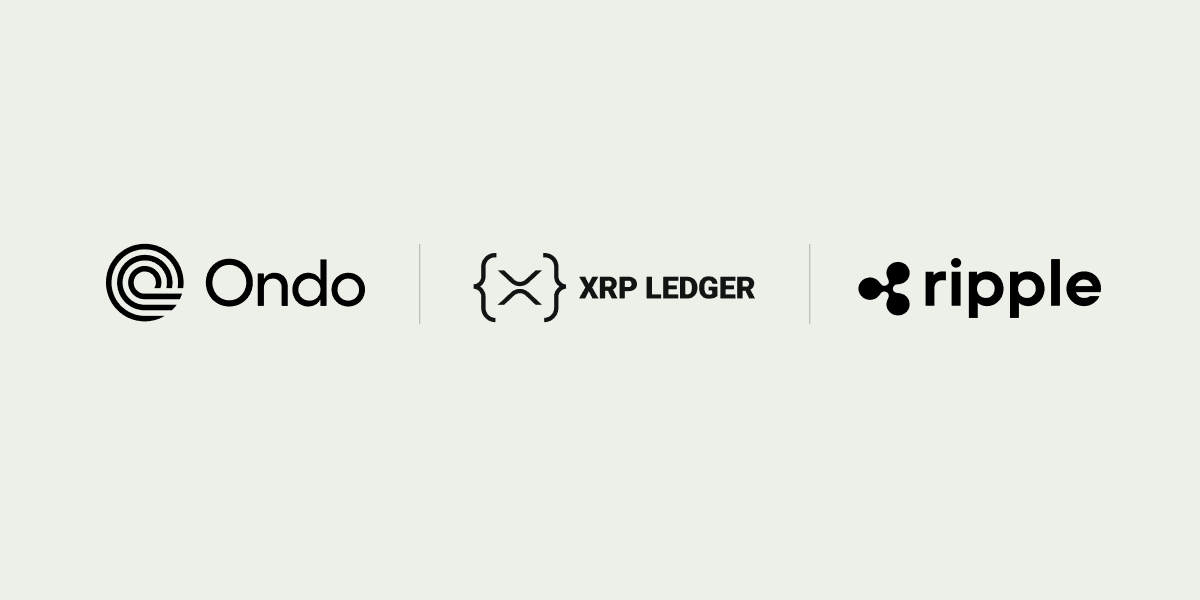The recent financial market crumble has put crypto networks and their stakeholders to the test. As market activities increased, network congestion on Ethereum (ETH) and Bitcoin (BTC) reached unprecedented levels—transaction fees for both assets exceeded 5x the norm. Moving these currencies in/out of exchanges became extremely difficult due to high fees and delayed processing. We saw evidence that many users, especially Ethereum users, may be shifting to the digital asset XRP for exchange balance transfers—and we’re not surprised.
XRP was designed with value transfer on top of mind. It is reliable and affordable across a wide range of network loads.
XRP Exchange Inflows/Outflows Rise as Ethereum Transaction Fees Increase
Transaction fee and gas price are robust measures of Ethereum network health. Higher fees mean that users pay a premium to have their transactions included in blocks sooner, or at all.
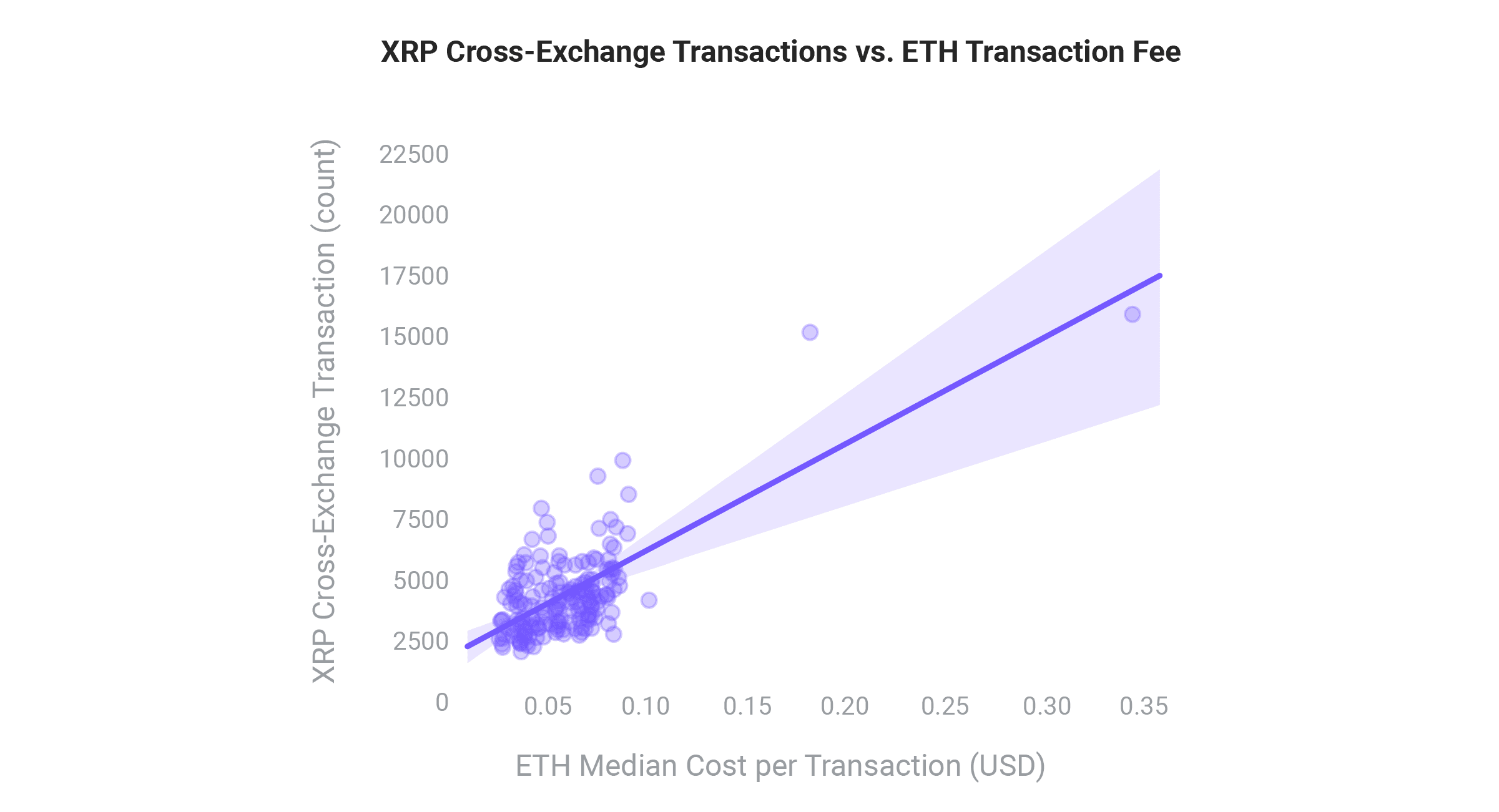
Figure 1. When ETH cost per transaction is higher, there are also more XRP cross-exchange transactions. This is especially true for days when ETH cost levels indicate severe network congestion. The metric we used is median cost; we see a starker effect when comparing mean.
On days when Ethereum fees skyrocketed, XRP cross-exchange transactions also increased significantly (Figure 1). Overall, higher Ethereum fees correlate with higher volumes in XRP (Pearson’s R = 0.7, statistically this is a meaningfully strong positive correlation). For example, on March 12, 2020, Ethereum transaction fees rose over 400%. That same day, XRP cross-exchange transactions rose 226%.
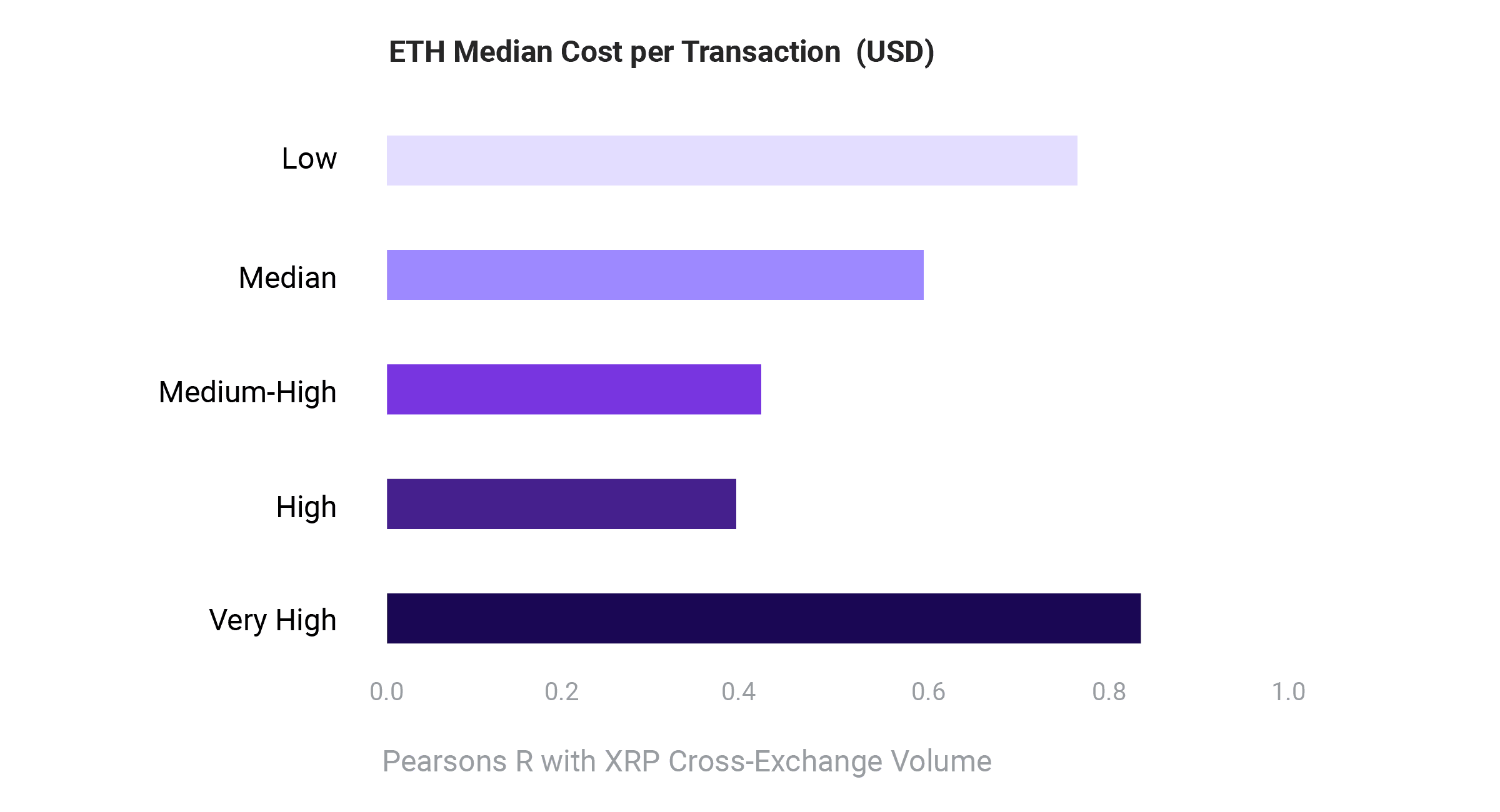
Figure 2. Pearson’s R of >0.6 is an indicator of positive correlation. ETH cost is detrended here to remove trends, and a time-lagged analysis was performed. Cost levels are based on percentiles. (Note: ETH cost is a long-tail distribution and percentiles are adjusted to reflect levels accordingly. Low: <50% percentile, other buckets are evenly distributed.)
The chart above (Figure 2) shows how strong the relation is for each level of Ethereum transaction fee. This relation is weaker, but still existent, when Ethereum fees are within a normal range (median to high) — and strongest when Ethereum is at its lowest and highest. This means when Ethereum fees lower, XRP cross-exchange transactions decrease.
It’s also important to note that Ethereum and Bitcoin cross-exchange transactions slightly decreased with higher network congestion. The observed XRP transactions increase is likely a result of traders using XRP as an alternative rebalancing asset.
XRP-ETH Trading Volume Increases During Network Congestion
It’s possible that traders do not hold enough XRP for rebalancing or liquidation, leading to converting their Ethereum into XRP, to use as a bridge currency. (Note: XRP can be sent directly without needing a central intermediary, making it a convenient instrument in bridging two different currencies quickly and efficiently.)
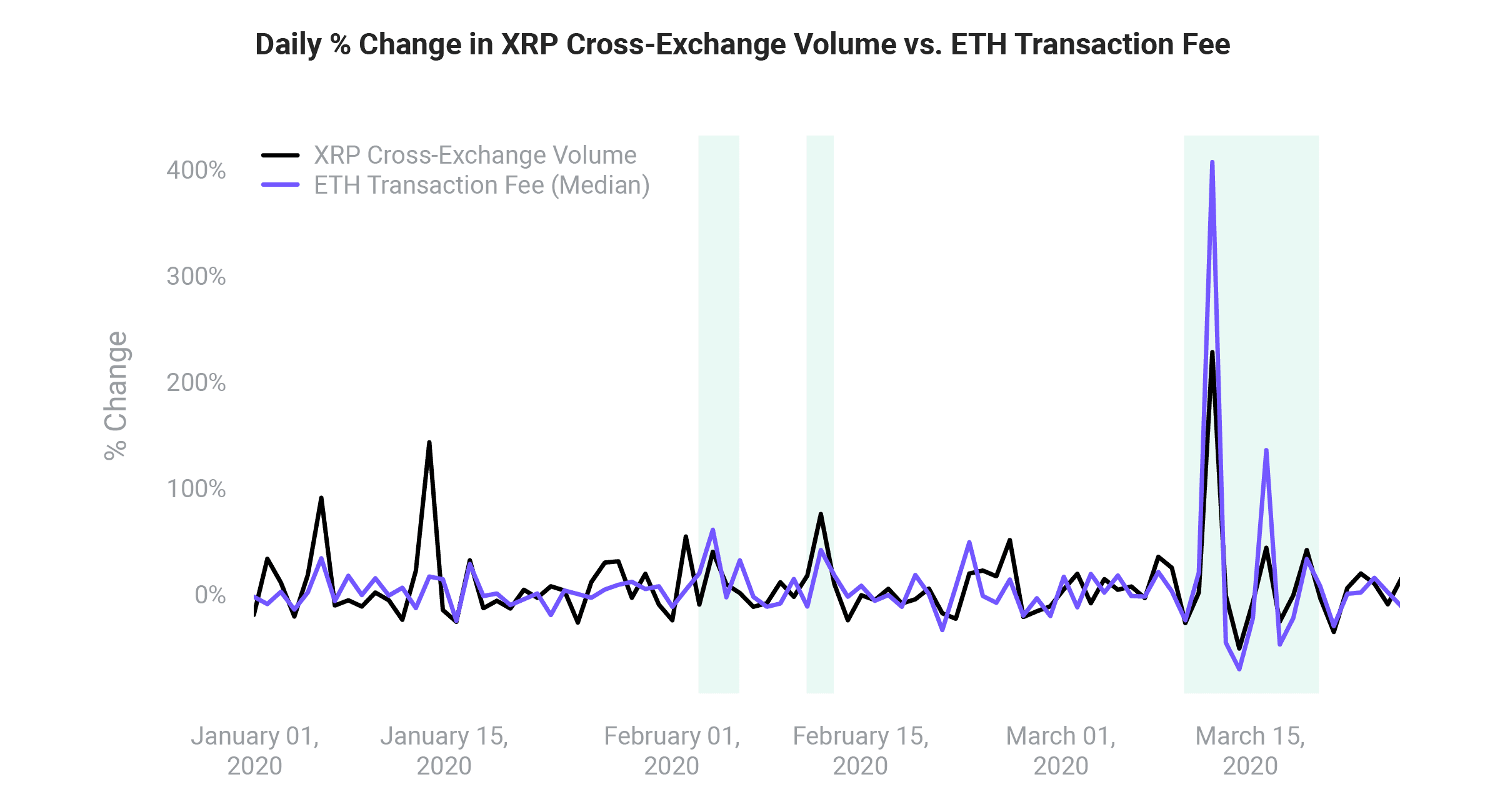
Figure 3. High linear correlation does not mean two values move in parallel, it means that more often than not, they move in the same direction. Highlighted days are days when we saw the highest correlation between ETH cost / transaction and XRP cross-exchange volume.
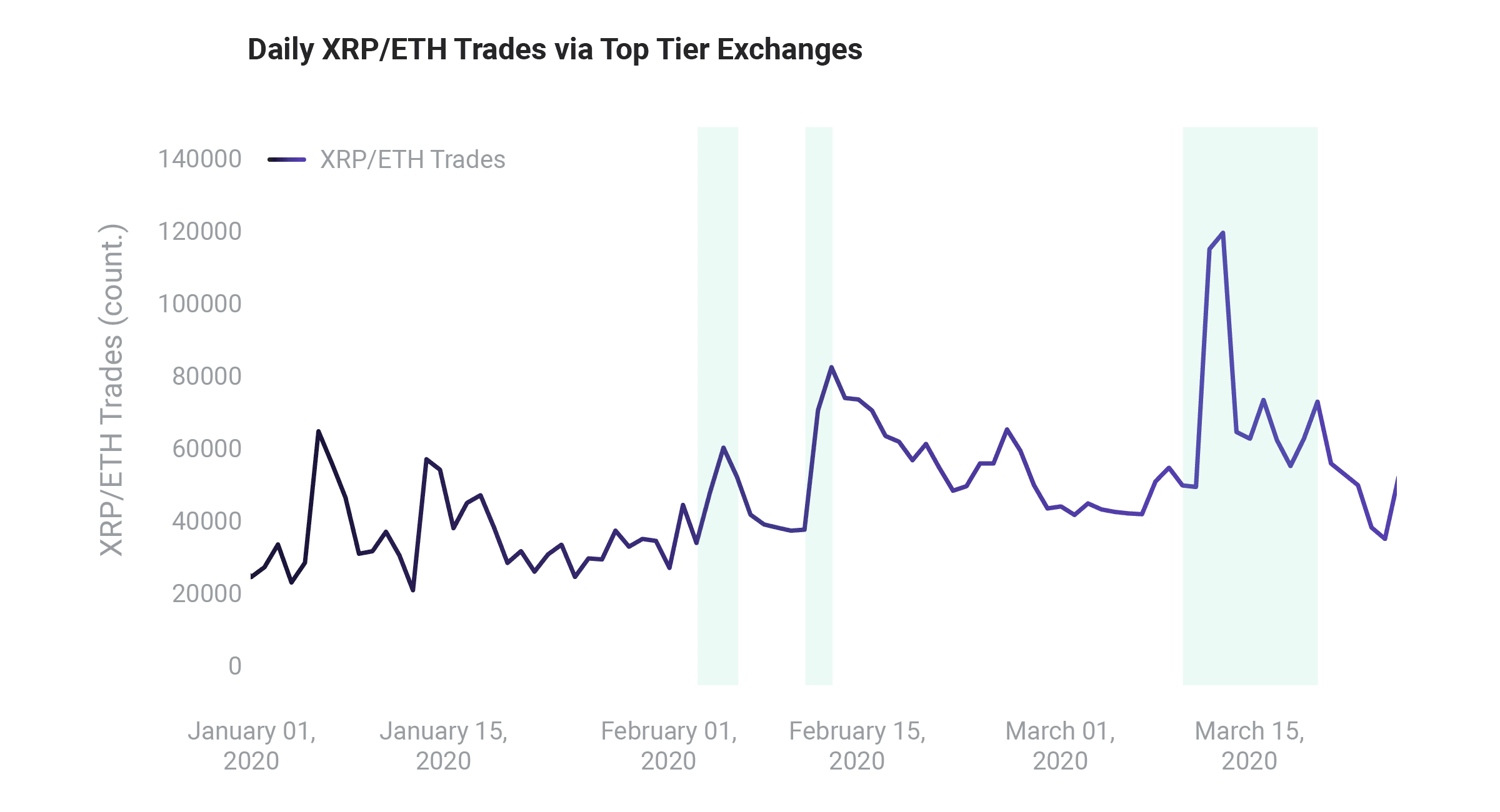
Figure 4. Top tier exchanges are ranked by CryptoCompare.com to reflect accurate market activities. During highlighted days, XRP/ETH trades increased significantly.
The charts above (Figure 3, Figure 4) greatly illustrates this behavior. When there is a significant increase in Ethereum fees, there is also an increase in XRP/ETH trading activities.
XRP Is Cheap to Move, Despite Market Conditions
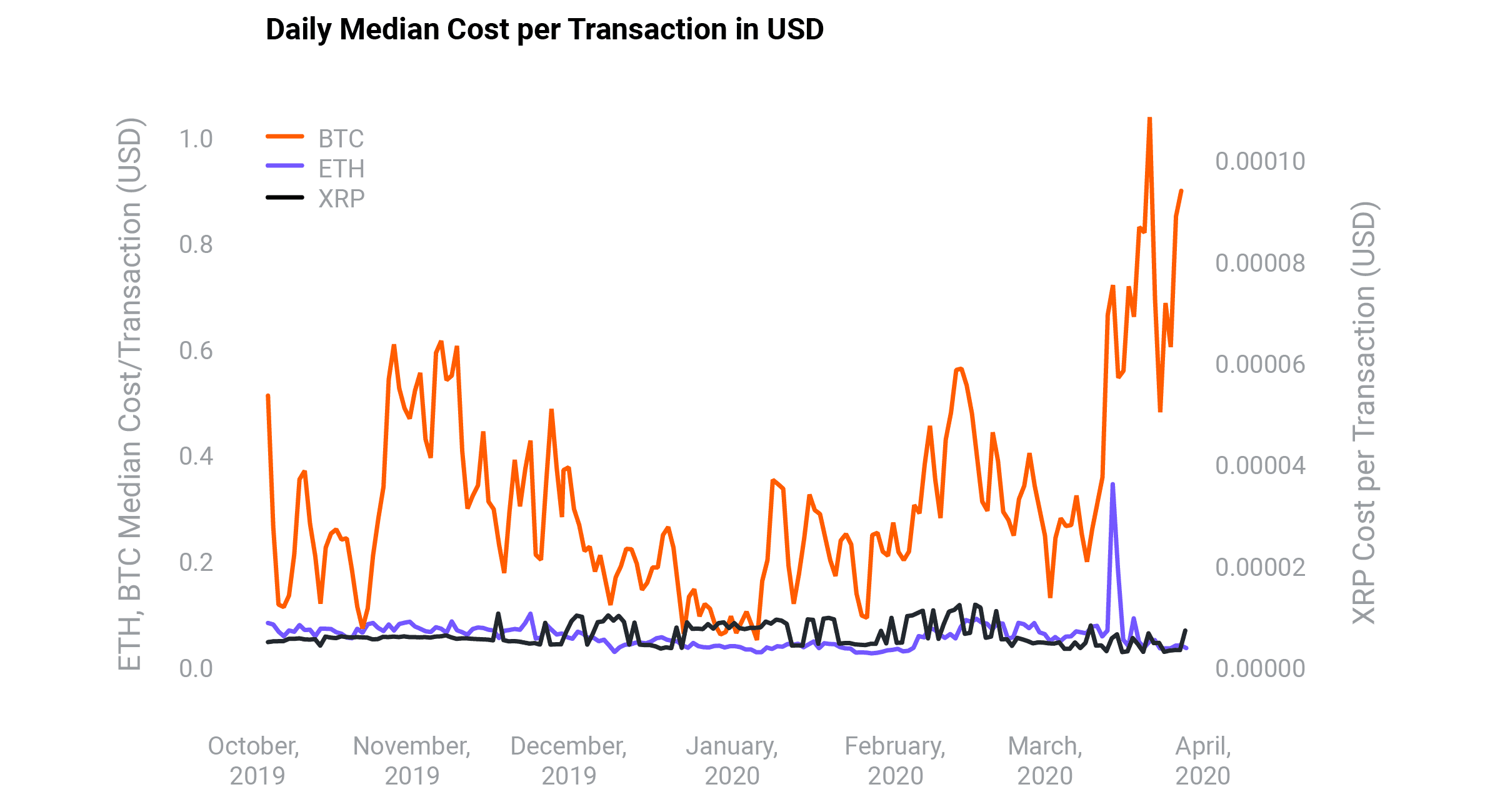
Figure 5. Median costs were plotted, but mean costs would show more extreme fluctuations and longer recovery periods in BTC and ETH cost per transaction.
As can be seen from the chart above (Figure 5) — when both Ethereum and Bitcoin fees skyrocketed, XRP fees remain at a stable level. Even though traders likely shifted to XRP for interexchange rebalancing, it did not get more expensive. When listed on exchanges as a base pair, this characteristic of XRP removes blockchain network load as a bottleneck for market liquidity.
Building an efficient and resilient network that makes moving money easy for everyone, everywhere is Ripple’s core vision. Strong evidence that these features are value-add for users gives our everyday work fulfillment. It’s also an incentive to continue focusing on them.
(Correlation does not mean causation, and we must be wary of spurious relationships when experimentation is not possible. Stay tuned to our engineering blog for a technical post on our methodology.)







